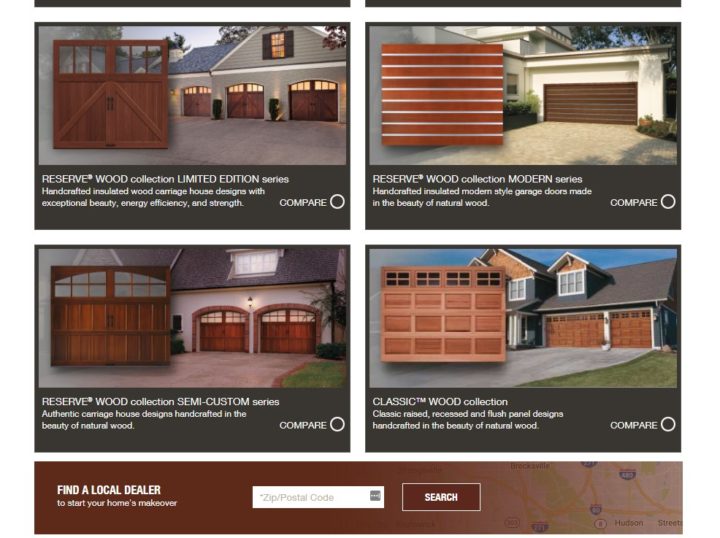Blog

Does Your B2C Website Benefit Your Target Audience?
Eight B2C Website Benefits
As a business to consumer company (B2C), your audience range is much more extensive than if you were merely targeting business owners in a specific industry. There are between 2 and 3 million e-commerce companies around the globe, with 1.3 million of those located in North America. Knowing your target audience becomes extremely important to delivering information in a way that speaks to them.
Your business is different than any other company out there — the key is in figuring out how to convey that to your potential customers. Fortunately, there are a few key things you can do to ensure your website is built precisely for those people you most want to reach. When a visitor lands on your page, they should go through a funnel that creates a conversion.
Here are eight tips to follow to ensure your company’s website is benefiting your audience:
1. Realize You Can’t Compete Financially With the Big Guys
Small and mid-size businesses need to understand they can’t compete with the big box retailers when it comes to price or advertising budget. However, you can compete in other areas, such as by offering better customer service or personalization options.
Figure out how you’re different and inform your target audience about it. Many customers abandon a purchase because of a bad customer service experience — in fact, 78 percent of people don’t complete a purchase of something they intended to buy due to poor service.

Warby Parker is an eyeglass company that offers glasses for half or less of what you would pay at most vision stores. For example, a simple frame for a woman is about $95, and that price includes the lenses. They have earned a reputation for their outstanding customer service from patrons’ stories about the store going above and beyond.
For example, one man left his glasses on a commuter train, and someone who worked for Warby Parker found them. When he got home, both the originals and a new pair from Warby Parker were waiting on him. That type of experience is one that stays with the consumer.
2. Personalize the Customer Experience
One way you can compete with the big guys is by personalizing the experience of your customers. Customers care about the time they spend on your website. So, improving the experience a customer has on your site improves customer retention by about 42 percent and customer satisfaction by 33 percent. Also, you’ll increase your up-sells and cross-sells.
There are many ways you can improve the experience visitors have on your website. Boosting your site’s speed is one of the best things you can do. You’ll also want to make navigation intuitive and limit the information on your landing page to just the most essential elements.
3. Anticipate Your Audience’s Needs
What are the things the typical person landing on your website is looking for? If you can anticipate the needs of your site visitors, you can deliver what they want.
The best way to figure this out is by first studying analytics for your site. Who is the typical person visiting? Moms? Millennials? Baby Boomers? Armed with this information, you can figure out why that user persona is on your website, as well as what you need to deliver to satisfy their needs. Next, study heat maps to figure out which areas on your landing page your visitors use most frequently.

Look at what Clopay Doors does to anticipate the needs of their site visitors. The company understands the average visitor is coming to browse through possible door replacements for their home. So, they show some of their more popular styles in an easy-to-digest grid layout. Then, they allow the user to choose a few styles to compare. They’ve anticipated their target audience will likely want to look at several options, and in turn, have given them the tools to do just that.
4. Use an Aesthetically Appealing Design
Is your site visually appealing? It might seem like a minor factor, but your site’s appearance has a significant impact on your site visitors, particularly the average consumer.
A site that is visually appealing has a delicate balance of positive and negative space — people tend to shy away from sites that are too cluttered. They also expect specific features to be in certain places, such as a navigation bar near the top of the page and your logo on the top left. These little touches can mean the difference between a site visitor who converts into a customer and a site visitor who bounces away.
5. Localize Your Business
If you run a small business, localization is one of the critical components of a successful online strategy. The best way to achieve localization is by integrating how your site performs with the IP address of the site visitor. This allows you to direct the person to the right landing page that will best meet their needs.

Look at the Living Social landing page. The site uses your IP address to figure out approximately where you are. Then, they present deals for that area so you can shop for local restaurant certificates and activities. This highly targeted, localized B2C marketing is much more efficient than showing the site visitor items that don’t apply to their shopping needs.
6. Include Video Content
In a survey of B2C marketers, 34 percent felt video was a key component of marketing success. Video engages the site users and allows you to deliver content to answer any questions they may have. With higher Internet connection speeds and more people accessing your site via mobile devices, adding video makes sense for most businesses.
7. Integrate Your Website With Your Social Media Profiles
About 81 percent of Americans have at least one social media profile, so integrating your company’s social media accounts into your website can create a rich experience for the consumer. It’s essential that people can quickly follow and engage with your company online. One of the simplest ways to achieve this is to include a link to your social media profiles on your homepage. You should also provide visitors with easy ways to share articles and other content from your site on social media.

Sky’s Guide Service offers a feature at the bottom of their page that instructs visitors to “find us.” This works well because users will then recognize the icons for Twitter, Facebook, YouTube and Vimeo. They’ve also focused on social media their typical customer is likely to use. If you navigate to their blog, they’ve further integrated Facebook with the site by throwing up a feed of posts and inviting you to like their page.
8. Display Visual Data
You may be tempted to fill your site with mostly text and fewer images. After all, the page will load faster, and isn’t speed essential? The problem is that people respond to images better than text. So, while speed is important, it’s better to compress images, add caching features and figure out other ways to speed up your site than by not using pictures.
Using visuals to display data is an efficient way to deliver information to your site visitors. For example, when people follow directions with both text and illustrations, they complete tasks about 323 percent better than people without the pictures.
Back to Audience Demographics
Of course, every marketing concept always comes back to audience demographics. Who is your target customer? Once you know the ins and outs of their needs, you can customize the content you deliver to their needs. Your website should be an ongoing petri dish, where you try different tactics and continually improve the experience for your average site visitor.